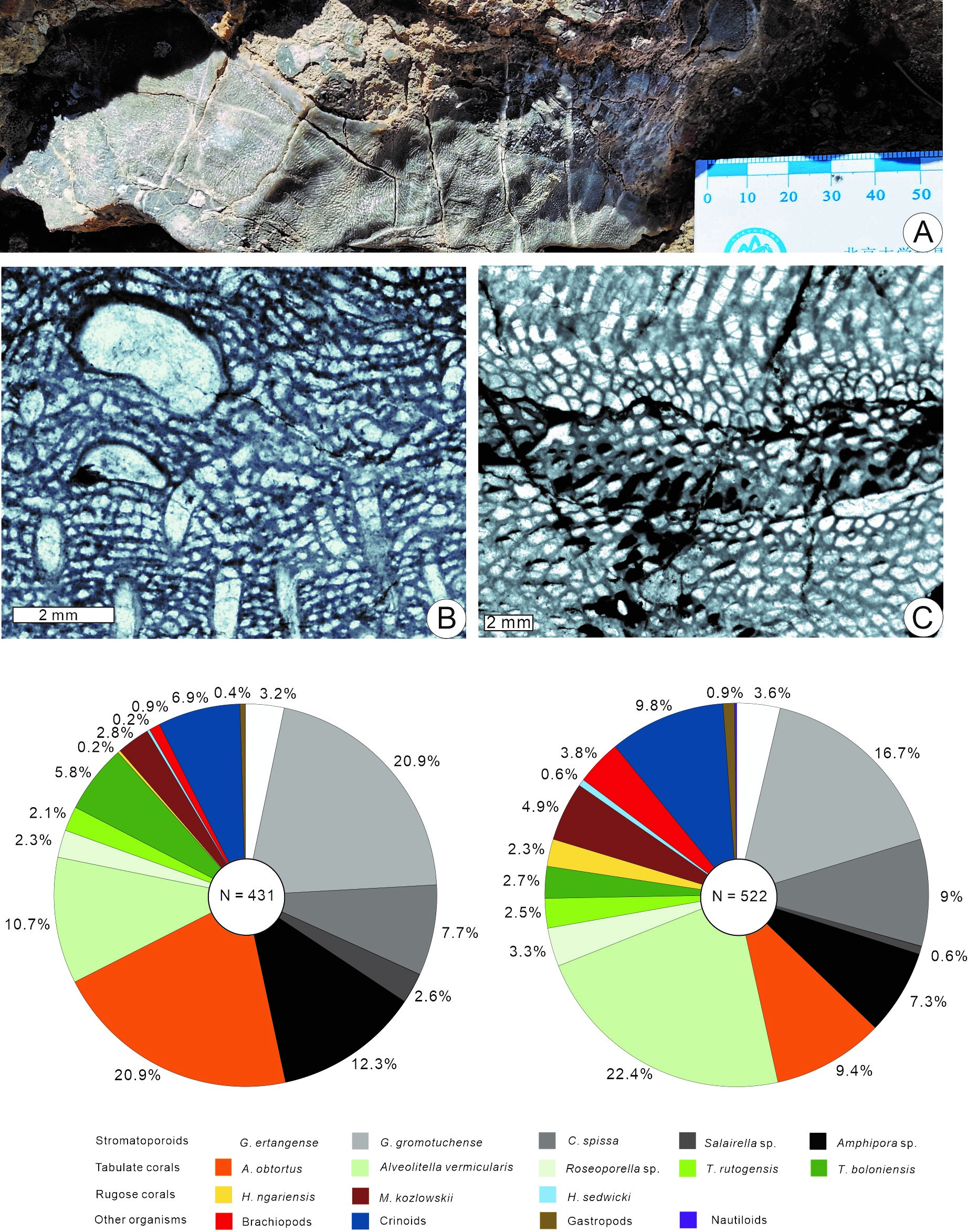By collecting the quadrats of three most prominent reefs in the Lazhuglung-Bangdagco region and preparing a total of 1085 thin sections, the reef structure and components are studied and reconstructed in detail.
This study has been published in international paleontological journal Palaeoworld.
North Qiangtang Block is located in the central region of north Tibet, between the Longmuco-Shuanghu and Xijinwulan-Jinshajiang suture zones. Among the regions, the Paleozoic strata in Ngari Prefecture of North Tibet are widespread and relatively complete. However, as the average elevation of the region is over 5000 meters, as well as harsh environmental conditions and inconvenient transportations, geological researches in the region progressed slowly.
The paleogeographic evolution of North Qiangtang Block in Tibet is a hot topic in recent years, particularly concerning the location and affiliation of the North Qiangtang Block and adjacent terranes. In addition, the North Qiangtang Block is an important potential oil and gas reservoir. Understanding the paleogeographic evolution of North Qiangtang Block is beneficial for a deep understanding of the petroleum geological conditions and significant for the petroleum explorations in the future.
During the field trip supported by the Second Tibetan Plateau Scientific Expedition Program, Associate Professors LIANG Kun, CHEN Wei, Assistant Professor SHENG Qingyi, Professor ZHANG Yichun and other team members from Nanjing Institute of Geology and Palaeontology, Chinese Academy of Sciences (NIGPAS) carried out comprehensive geological investigations and found typical mound-shaped patch reefs besides the Shouxinghu lake. It is found that the patch reefs are constructed mainly by 10 species of corals and stromatoporoids, forming rigid and stable reefs by a combination of framestone and coverstone. Complex biotic interactions among the reef organisms are also found, which fits the features of mesophotic coral ecosystems.
Previous studies have controversial opinions in the affiliation of the Lazhuglung-Bangdagco region. While in this study, it is found that the main reef builders, two species of stromatoporoid Gerronostromaria, possessing closely spaced laminae and pillars, co-occur in the Lazhuglung-Bangdagco region, Changdu and South China and distributed only among the three terranes. “Therefore, our study provides new evidence to prove the close paleobiogeographic affinity between Lazhuglung-Bangdagco region, Changdu and South China”, says LIANG.
In addition, according to the assemblages of tabulate corals and stromatoporoids, the reefs belong to Middle Devonian Givetian in age. Therefore, the Devonian strata in Lazhuglung-Bangdagco region extends at least to the Middle Devonian, which enhances our understanding on the stratigraphic distribution features of the regions.
This study was supported by the grants from the Second Tibetan Plateau Scientific Expedition and Research Program, Chinese Academy of Sciences, and the National Science Foundation of China.
Reference: Liang K., Zhang Y-C., Chen J-T., Luo M., Guo W., Qie W-K., Middle Devonian (Givetian) coral-stromatoporoid patch reefs from the Lazhuglung Formation, Xizang (Tibet) and their palaeoecological and palaeogeographical implications, 2023, Palaeoworld, https://doi.org/10.1016/j.palwor.2023.02.005.

Fig. 1. Field photo of Shouxinghu and an overview of Middle Devonian patch reefs in the Lazhuglung-Bangdagco region

Fig. 2. Reef components and the major reef builders tabulate coral Alveolites and stromatoporoid Gerronostromaria in the patch reefs
Contact:
LIU Yun, Propagandist
Email: yunliu@nigpas.ac.cn
Nanjing Institute of Geology and Palaeontology, Chinese Academy of Sciences
Nanjing, Jiangsu 210008, China
Download:
